-
Car Reviews
- Car News
-
Car Comparisons
Latest comparisons
- Chasing Deals
The Prelude is back after a 25-year hiatus, but can it thrive with a modest Civic eHEV powertrain?
It’s back. After a quarter of a century away, the Honda Prelude returns for its sixth generation as a car – on the surface of it – quite unlike those before.
A sensible hybrid powertrain and focus on efficiency may not seem especially Prelude, but much like the Toyota Supra that’s similarly rebirthed in recent years, our perception of its forebears is arguably rose-tinted.
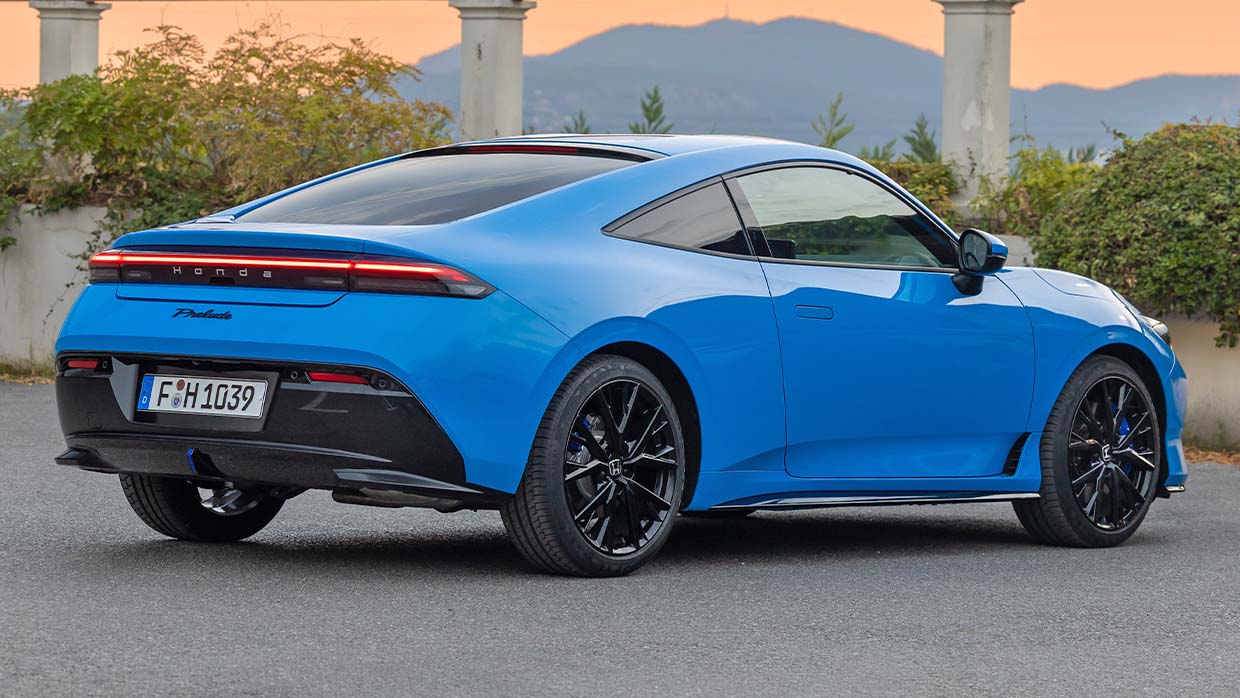
See, the Prelude was all about comfy liveability, and it’s frequently referred to in Japan as the ‘date car’. One sculptured enough on the outside to make an impression yet cultured enough inside to not make prospective new partners run a mile.
You’d better avoid explaining this hybrid system to them in too much detail, then – unless they happen to be a car enthusiast too.
Shared with eHEV versions of the Civic and ZR-V, it pairs a 2.0-litre petrol engine with an electric motor for peak outputs of 135kW and 315Nm, enough to shift its 1480kg to 100km/h in 8.2secs. The top speed is 188km/h.
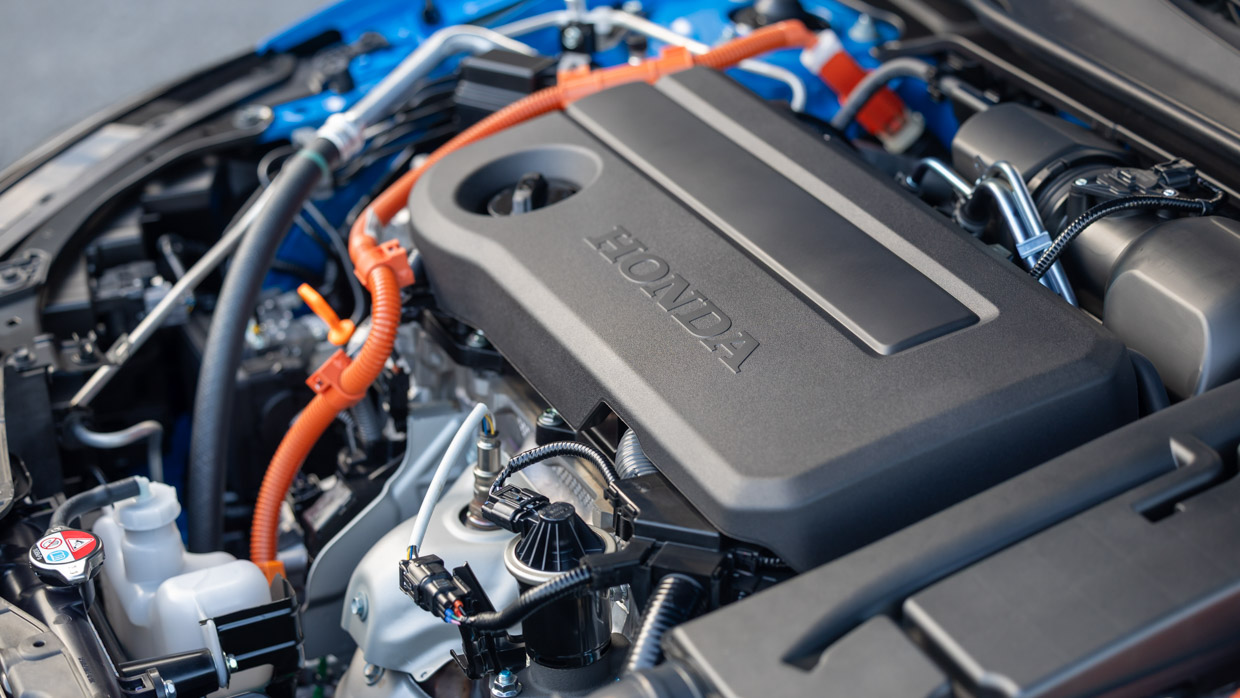
Its engine tends to only directly drive the front wheels at motorway cruising speeds, its power more frequently channelled through the e-motor, a process that allows it to run at more efficient revs for greater fuel economy.
Very scholarly for a sporty two-door, of course, and Honda knows as much with its introduction of S+ Shift. Similar to Hyundai’s thinking in the Ioniq 5 N, it offers a set of eight, simulated gear ratios operable through ‘wheel-mounted paddleshifters.
They’re matched against a soundtrack – and a 6000rpm rev limit – with S+ creating physical jolts during shifting and flaring the revs as you go down the ratios to mimic a heel ‘n’ toe technique.
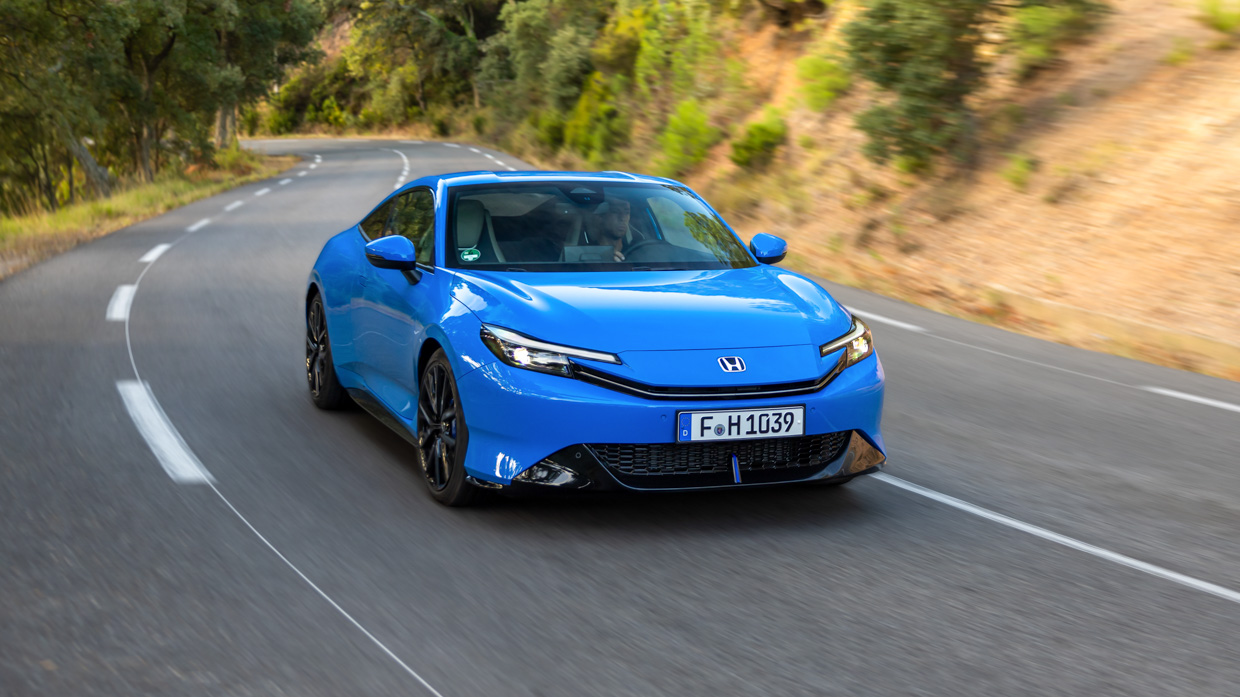
It became our default while driving the car, whether leaving it to shuffle the ‘gears’ itself in the background, like a regular automatic, or grabbing the paddles and getting stuck in ourselves.
With eight ratios across its modest speed range the gears are short and genuinely engaging when you’re in the mood. They also help elevate the sensation of speed; essential, one might argue, when the Prelude’s peak outputs are so tame.
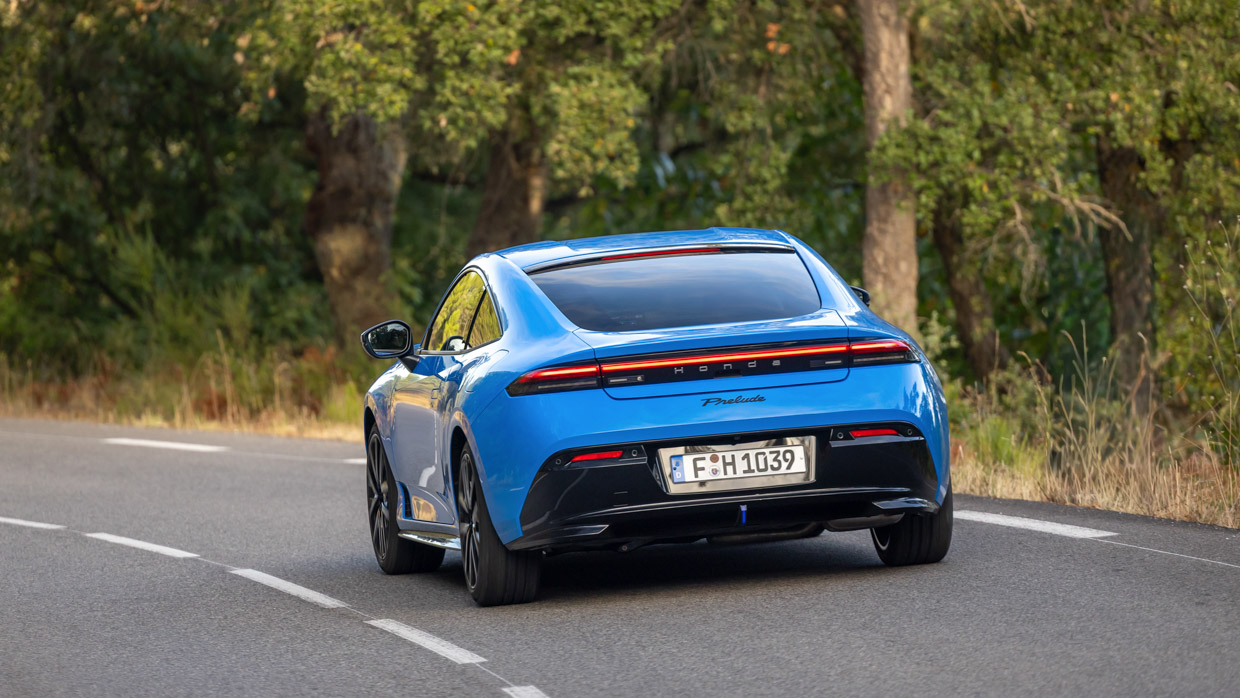
The chassis could certainly handle much more.
It borrows the dual-axis struts and adaptive damping setup from the muscular Civic Type R, though with more of a bias to ride comfort, while there’s Agile Handling Assist – an active braking system that helps neaten your line into corners – and some sticky Continental tyres beneath.
The Prelude makes the very best of the components it’s been given and proves a joy to keep pushing harder on a good piece of road, all the while knowing it’ll settle right back down to an effortless cruise at will.
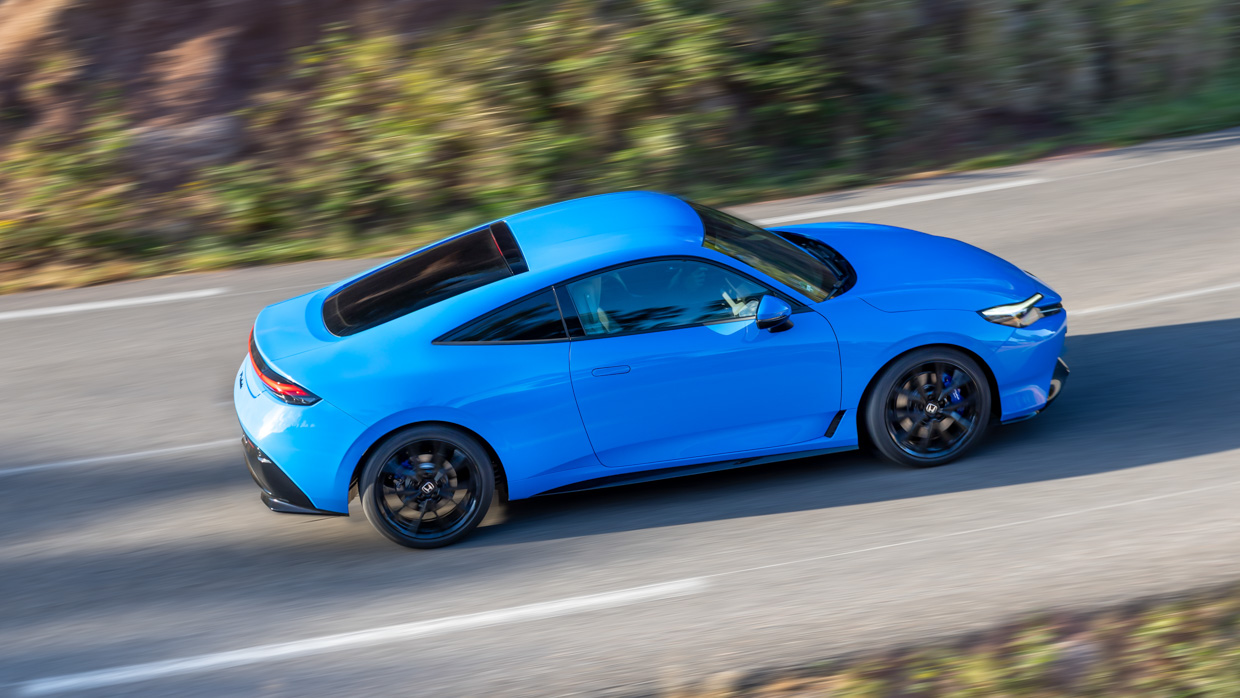
Its grip is carefully spread across all four corners, with no tyre squeal or frustrating wheelspin, while its brake pedal – which operates a bespoke Brembo system – is strong and trustworthy.
Honda loves its engineering and its typical focus permeates the new Prelude. Will they transplant in the Type R powertrain at some point? The bones of the car feel like they could take it, but perhaps a higher-powered pure EV is a possibility too. Let’s hope the car’s story doesn’t quite end here…
It should prove practical, though. The two back seats are best reserved for younger folk but they fold easily down to yield 663 litres of luggage capacity. Enough, we’re told, for four wheels and tyres (should you enjoy a trackday), two surfboards or one bicycle.
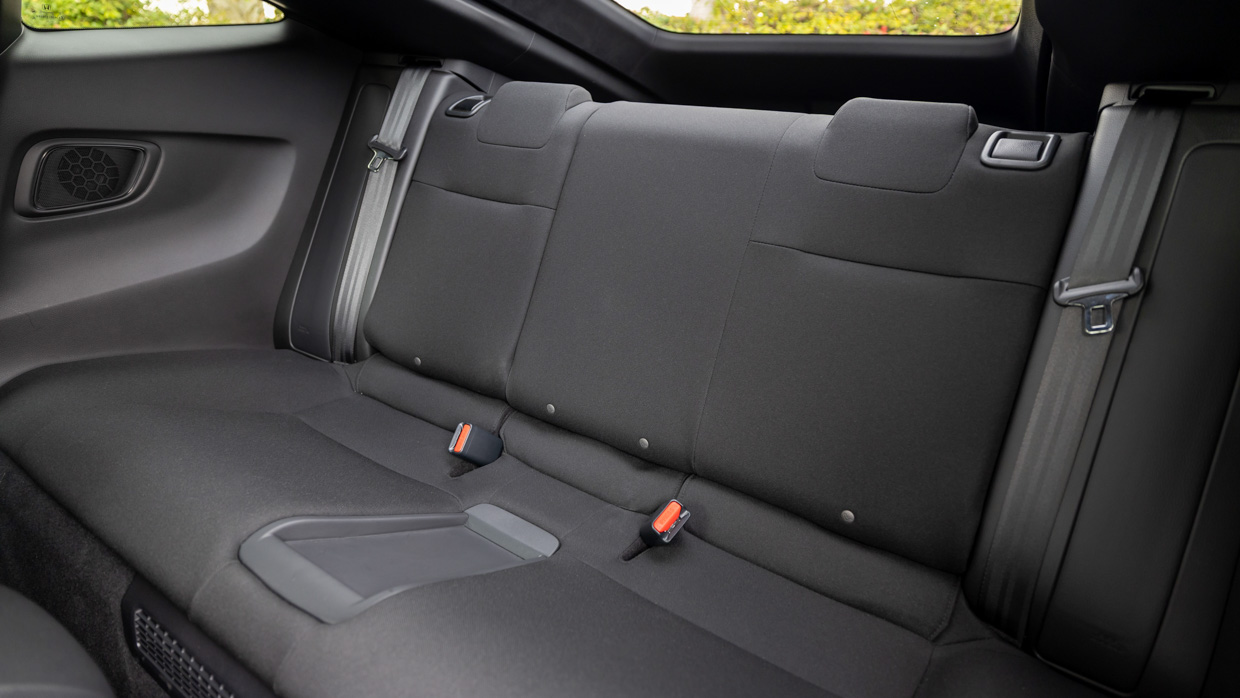
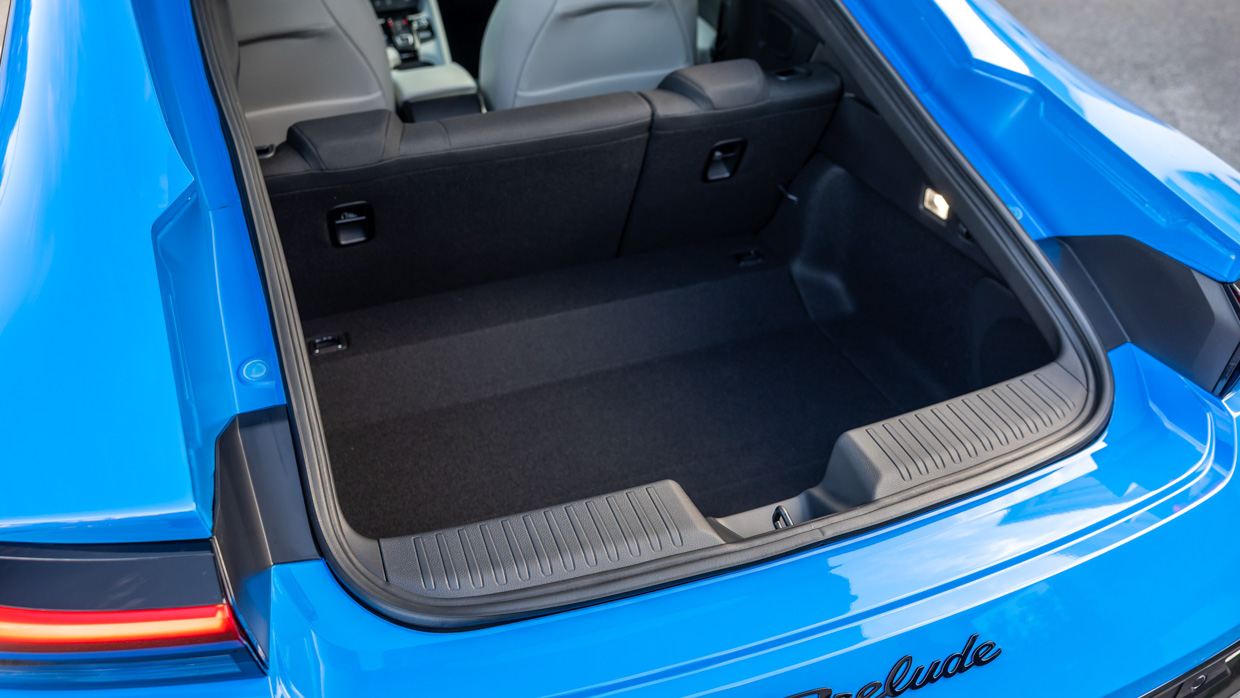
Curiously, its front seats don’t match, the driver hugged by taller, stronger side bolsters while the passenger has lower, softer borders to their seat base for more gracious entry and exit.
Crucial on a date, perhaps. We didn’t feel much tangible difference while swapping between the two but hey, it’s a fun piece of trivia, if nothing else.
The cabin itself is nicely trimmed and appointed, though some of the plastics might take acclimatisation for anyone trading in an Audi TT. The overall ambience is pleasing and the pragmatism of its physical climate controls and drive mode toggles is a big win for a car with enthusiast DNA.
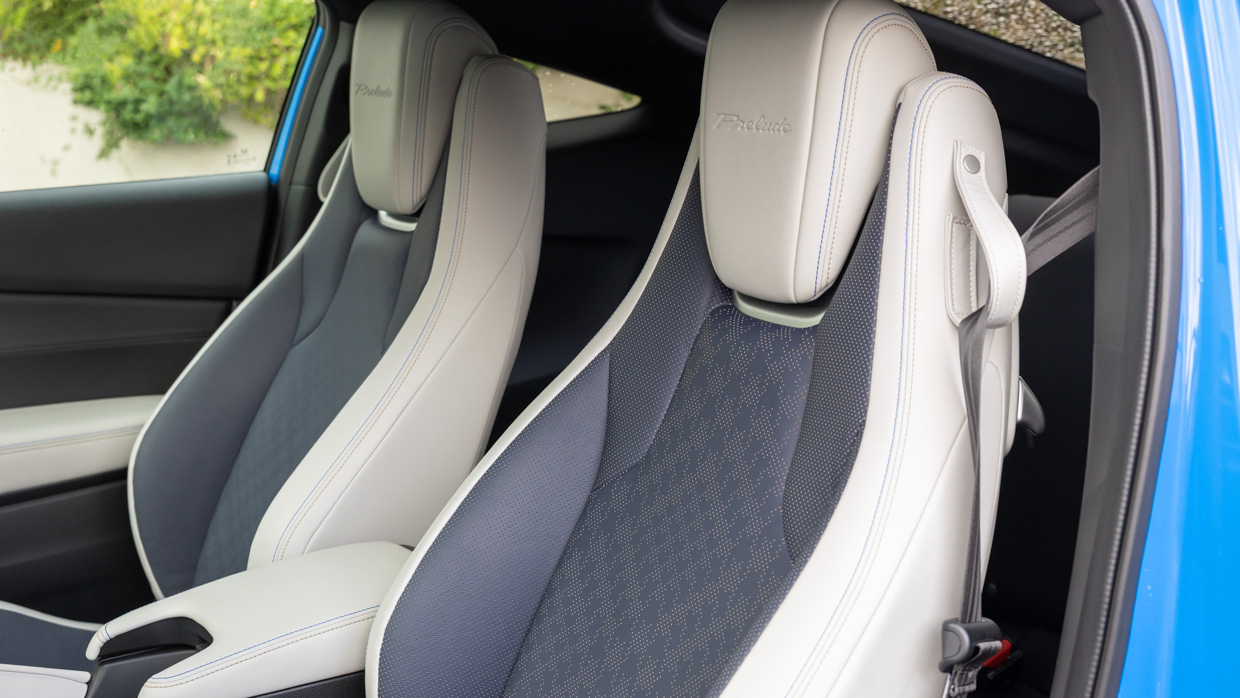
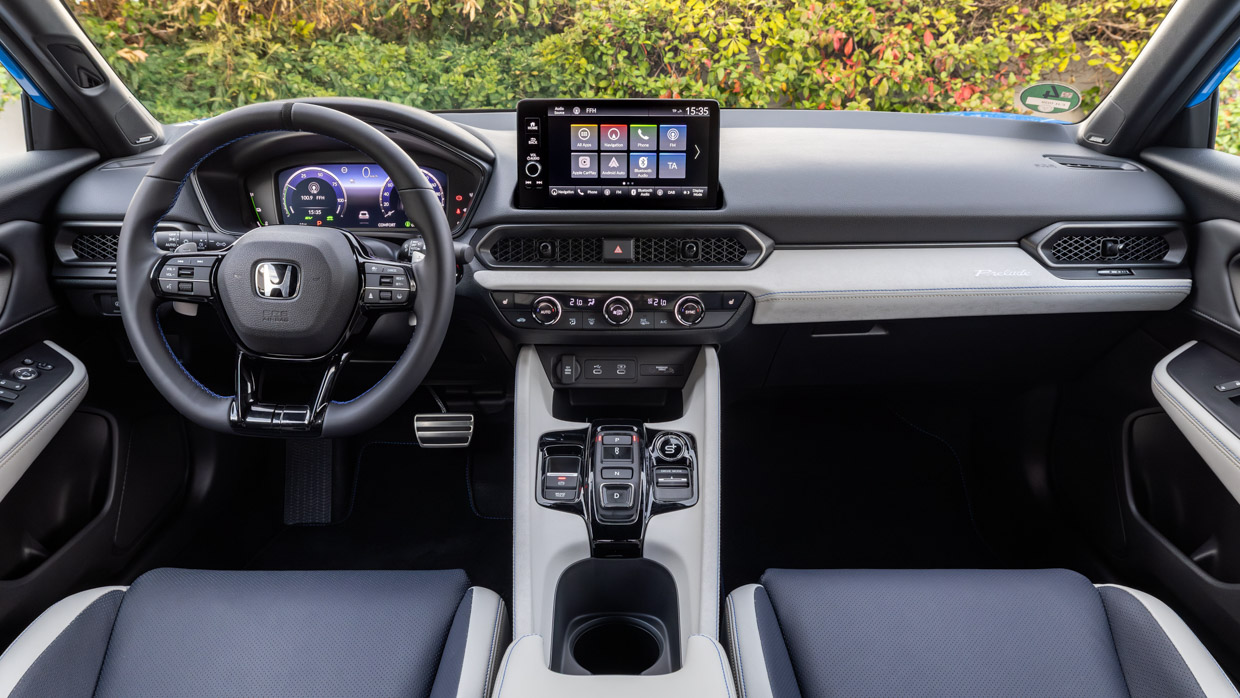
Those drive modes offer plenty to play with, in fact. There are seven levels of regenerative braking, only operable when you’re not using S+, and this initial taster didn’t give us enough time to truly figure them out.
Not least because the car quickly returns itself to the middlemost one (not allowing you to stick in one, favoured regen mode) and the draw of S+ simply proved too strong on our first acquaintance.
You can also toggle through overarching Comfort, GT and Sport setups which play with the powertrain, steering, adaptive damping, engine sound and digital instrument display, with an Individual mode available to pick ‘n’ mix your favourites.
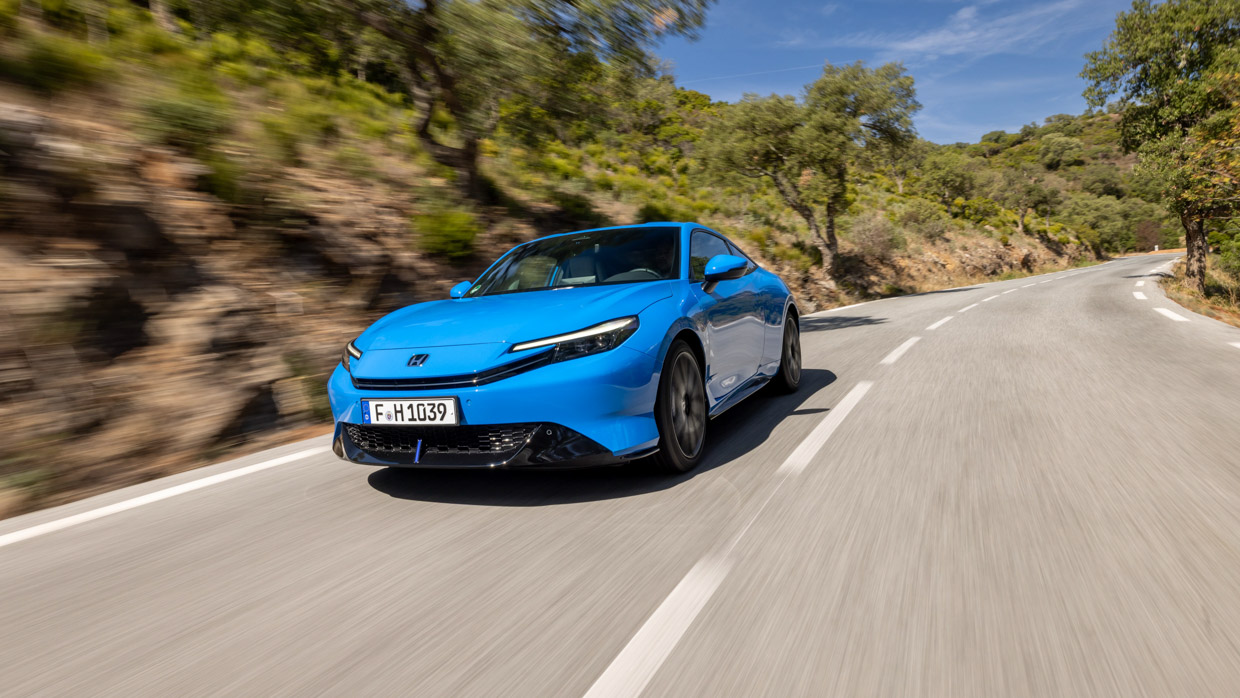
The car defaults into GT on start up, which balances comfort and tenacity nicely for the level of performance on offer.
Though even with everything ramped up, this never feels anything but a honed and liveable front-wheel-drive coupe, the transcendent highs of old Integra Type Rs feeling an echelon or two above what’s on offer here.
Nevertheless, we’re overjoyed Honda’s bothered making it and can’t help but admire the effort it’s put in.
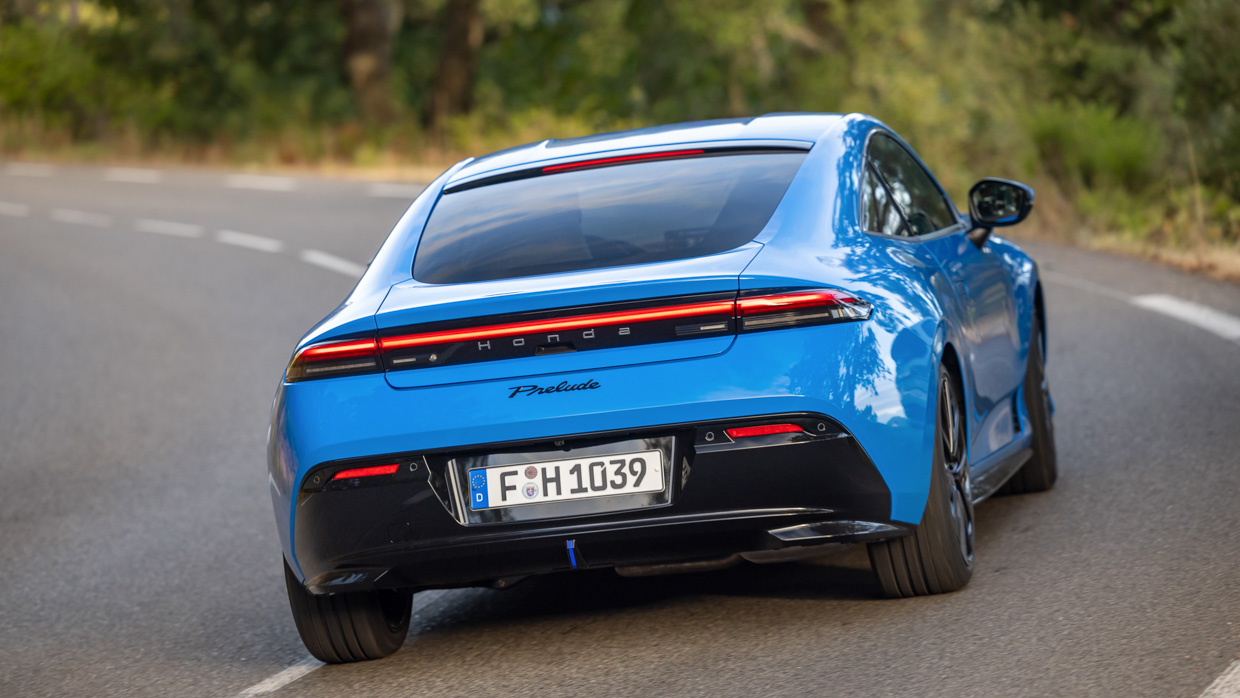
Coupe rivals are desperately thin on the ground nowadays, with the BMW 2 Series Coupe the Prelude’s best attempt at a nemesis. The German packs more commodious rear seats and a purer powertrain but it lacks the Prelude’s design swagger and sheer curiosity.
And one perk of an electrified powertrain is its efficiency. Honda claims 5.2L/100km on the WLTP cycle (alongside 117g/km of CO2 emissions) and during some reasonably spirited driving we scored 7.0L/100km. What we don’t yet know is how affordable it is to buy.
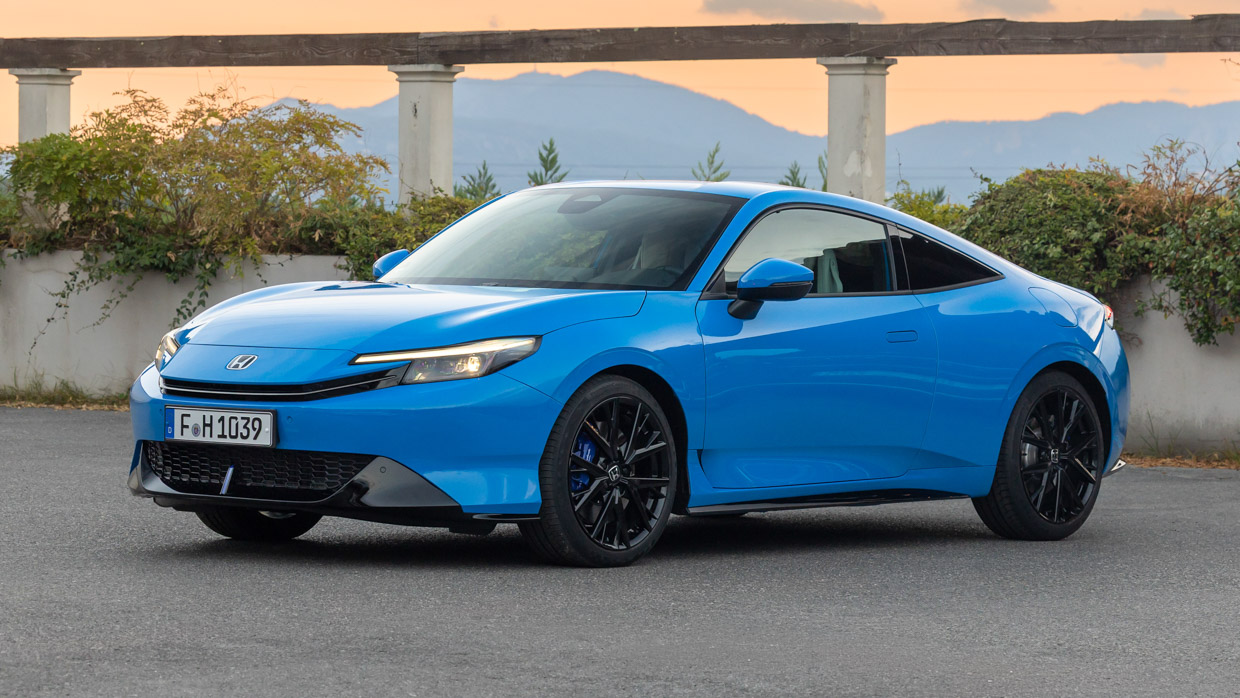
If Aussie prices can mirror those of its European launch, we’ll be looking at around $60,000 and thus a niche car that’s well worth taking a punt on.
Demand has vastly outstripped supply so far for Prelude in its native Japan, proving there was pent-up demand and that this was a rebirth well worth Honda’s forensic effort beyond the powertrain. Fingers crossed that there’s even more to come.
About Chasing cars
Chasing Cars reviews are 100% independent.
Because we are powered by Budget Direct Insurance, we don’t receive advertising or sales revenue from car manufacturers.
We’re truly independent – giving you Australia’s best car reviews.
The estimate provided does not take into account your personal circumstances but is intended to give a general indication of the cost of insurance, in order to obtain a complete quote, please visit www.budgetdirect.com.au. Estimate includes 15%^ online discount.
^Conditions Apply
Budget Direct Insurance arranged by Auto & General Services Pty Ltd ACN 003 617 909(AGS) AFSL 241 411, for and on behalf of the insurer, Auto & General Insurance Company Limited(ABN 42 111 586 353, AFSL 285 571).Because we don’t know your financial needs, we can’t advise you if this insurance will suit you. You should consider your needs and the Product Disclosure Statement before making a decision to buy insurance. Terms and conditions apply.
Indicative quote based on assumptions including postcode , 40 year old male with no offences, licence suspensions or claims in the last 5 years, a NCD Rating 1 and no younger drivers listed. White car, driven up to 10,000kms a year, unfinanced, with no modifications, factory options and/or non-standard accessories, private use only and garaged at night.
^Online Discounts Terms & Conditions
1. Discounts apply to the premium paid for a new Budget Direct Gold Comprehensive Car Insurance, Third Party Property Only or Third Party Property, Fire & Theft Insurance policy initiated online on or after 29 March 2017. Discounts do not apply to optional Roadside Assistance.
2. Discounts do not apply to any renewal offer of insurance.
3. Discounts only apply to the insurance portion of the premium. Discounts are applied before government charges, taxes, levies and fees, including instalment processing fees (as applicable). The full extent of discounts may therefore be impacted.
4. We reserve the right to change the offer without notice.